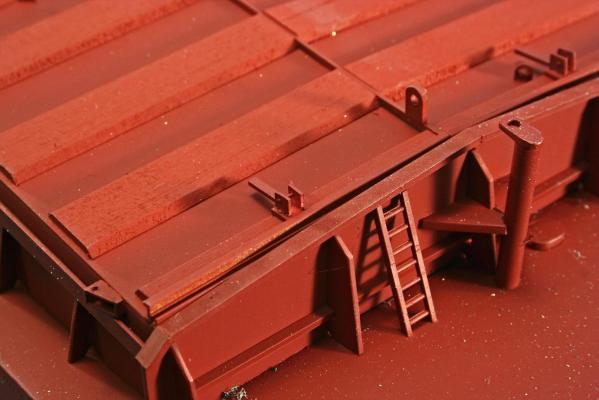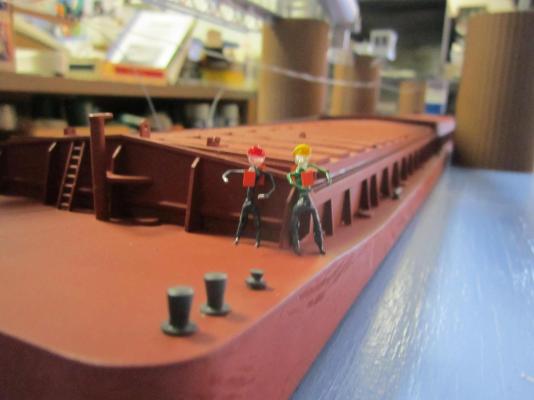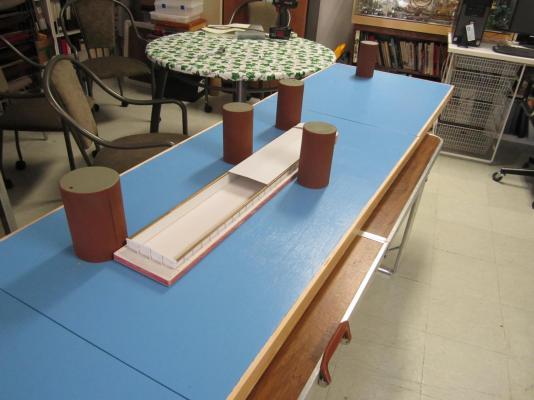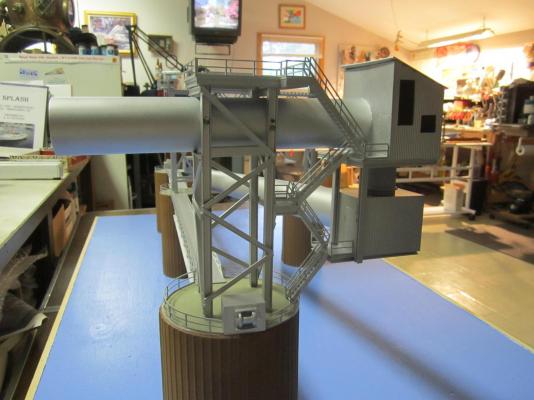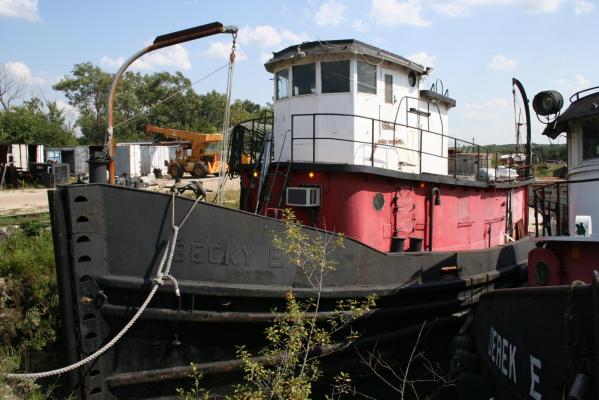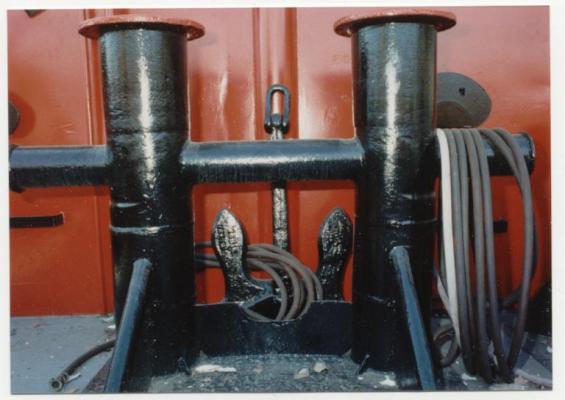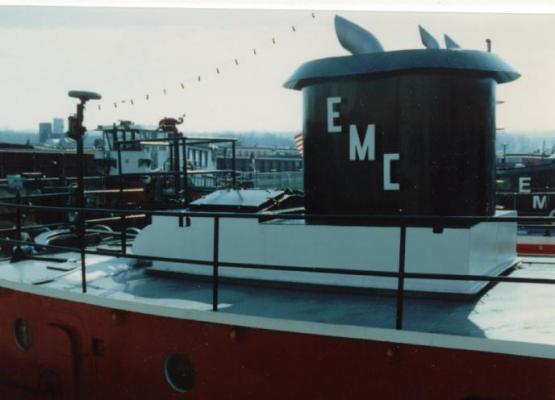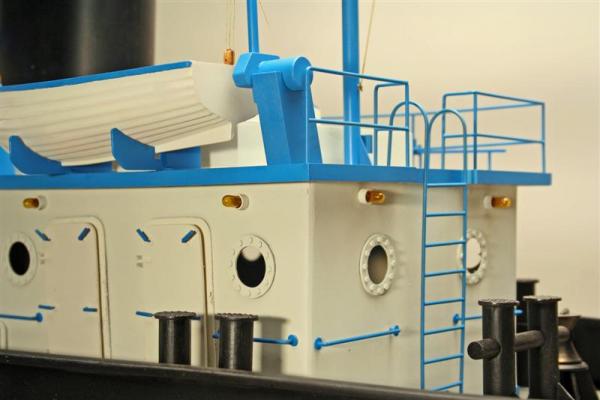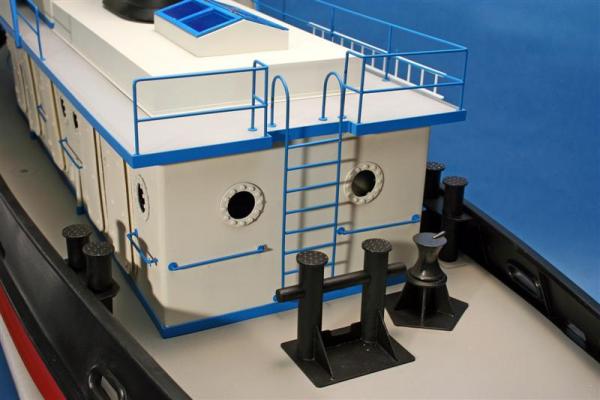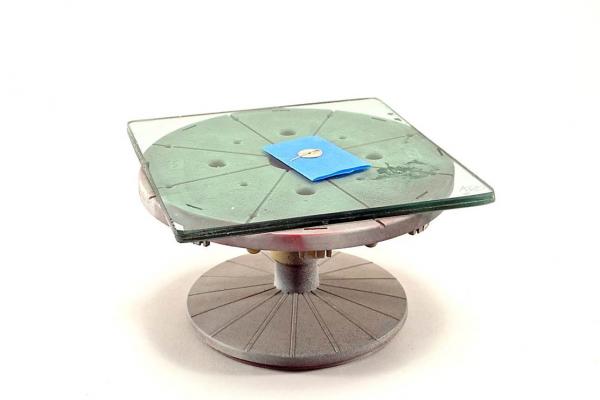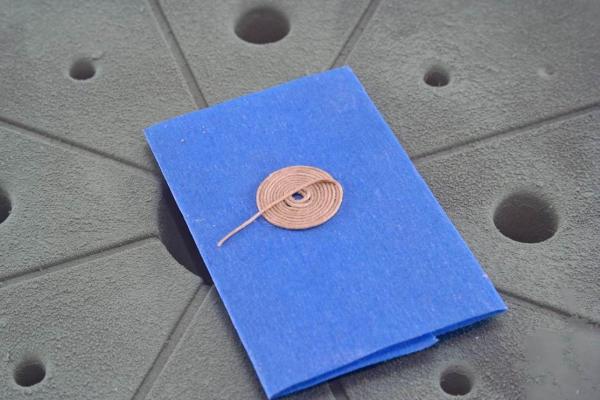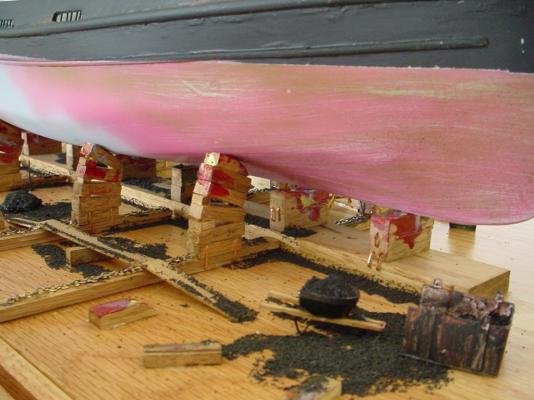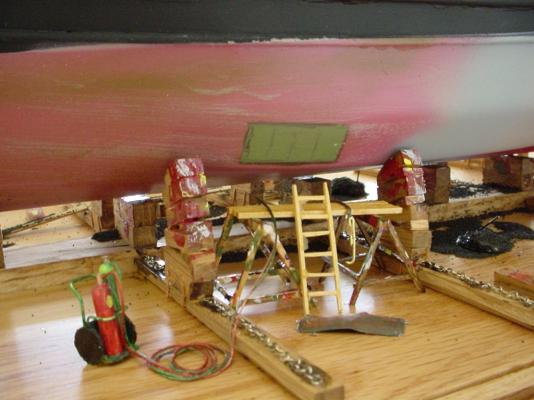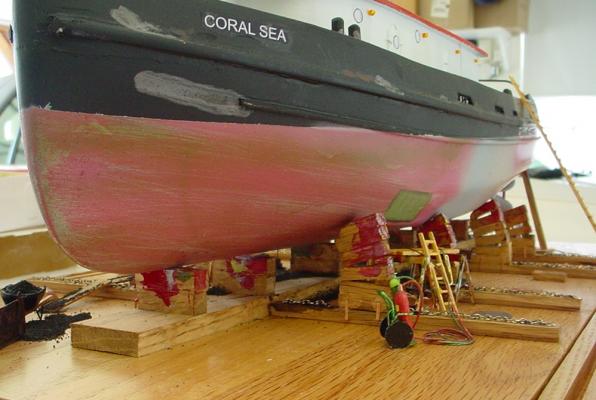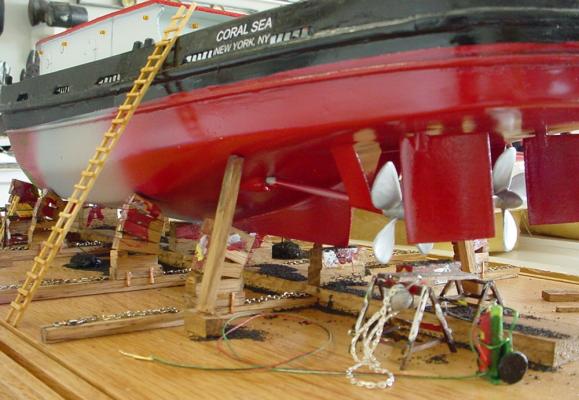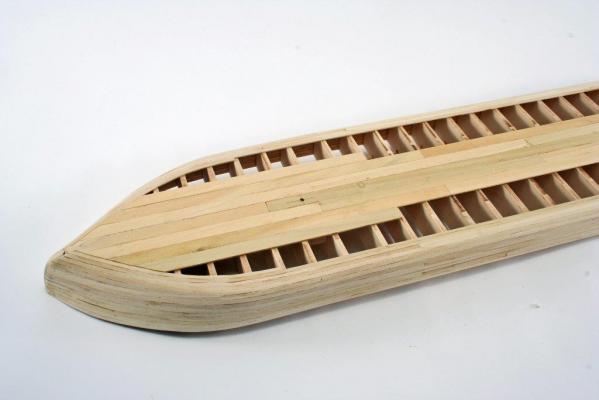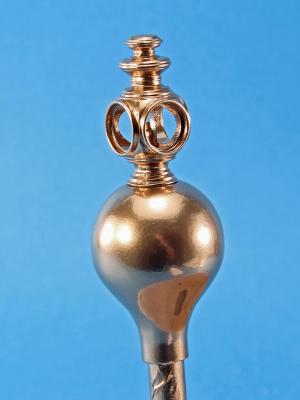-
Posts
3,021 -
Joined
-
Last visited
Content Type
Profiles
Forums
Gallery
Events
Everything posted by kurtvd19
-
Clare: He will have books there to sell and will sign them - we are providing an author's table for this purpose. Kurt
- 4 replies
-
- Douglas Brooks
- Traditional Japanese Boats
-
(and 1 more)
Tagged with:
-
Ben: Just came across this build today. Glad to see you are taking this on. The Lakes are one of my main areas of interest and the Fitz has a special place there. I have tons of video of dives on the wreck (submersibles - as well as the Newt Suit dive to replace the bell). Saw prototype kit pieces for a HO scale model that I don't believe ever made it into production - BIG! I bet the completed resin kit would have weighed a lot more than I would ever want to move around. If you ever get a chance to see the model of the Fitz shipwreck at the WI Maritime Museum you will stand there for a long time looking at all the details. The model is made of heavy watercolor paper and it was made by the artist that was commissioned by the USCG during the initial investigation of the wreck. He was hired to make large drawings/paintings of the images from the initial ROV photographs for the inquiry board. He later made the model and supplemented the initial data he had with the stuff done by Cousteau so the model isn't as accurate as today's data shows but it is a great model showing the positions of the bow and stern sections, the piles of hatches and taconite. It is currently under a rotating ceiling light with blue gels that gives the appearance of light on water hitting the wreck though the facts are that at 630 feet there is zero light. The Fitz is a popular subject and about every 5 years or so we get a Fitz model entered in the model competition at the WI Maritime Museum and I always take a special interest in these. Other years I have to be content with models of other lakers that are entered and most are very excellent models - one of our regular contributors recently retired as first mate on the St. Mary's Challenger - a 109 year old steam bulk carrier that was converted to a barge coupled to a tug as an ATB - Articulated Tug Barge. His models are always dead on with the details. I am looking forward to your build. Kurt
- 40 replies
-
- edmund fitzgerald
- iron shipwrights
-
(and 1 more)
Tagged with:
-
Rod: Congratulations on completing a very nice model. The display stand and base are very nice too. Kurt
-
Mick: Chuck and I talked yesterday after your question (and my reply to you - in error as it turns out - sorry). Tug boats being my primary interest I was not as familiar with the 18th C practices as I thought I was. Take care, Kurt
- 504 replies
-
- washington
- galley
-
(and 1 more)
Tagged with:
-
Mick: Glad you are starting this build log. Jeff worked from plans from the National Maritime Museum plans taken off the ship after it was captured so the scarfs are probably correct. The Bibliography lists a good number of references Jeff used. Looking forward to watching your progress. Kurt
- 504 replies
-
- washington
- galley
-
(and 1 more)
Tagged with:
-
Cathead: The books are great - if you get them through the library loan I bet you will still purchase them later. The Museum people are a friendly bunch and will answer your questions. They have a lot of great models - but their lighting is poor and they all need cleaning. One of their board members told me recently that they are finally going to get them professionally cleaned. The steamboats were made directly south of the big house which sits just up a slight hill from the Ohio River - the site is now occupied by Jeffersonville Barge Co. and they build the big river barges right there. I wound up using Jeffersonville Barge Co. plans to build a 1/72 scale barge (along with a 9' diorama) for a legal case for a courtroom exhibit in a wrongful death case. River stuff is my main interest. Even better when you can get paid to build it. The overall photo of the very incomplete diorama shows the unpainted barge in place and the other photo shows the overhead loading machinery that is atop the three main cells (a scale 35' out of the water). BTW, water in the Ohio and other rivers is NOT blue, but being made for a jury to view we decided that showing brown water would maybe have them asking how the barge was floating on dirt. Also, the scale deckhands were made overly simple so as not to "confuse" jurors. This Atty. is a specialist in maritime cases and seeing that he won the case he must know what he's doing. The nice thing about this besides being paid very well to build a model is that he's promised this will not be the last case coming my way. It all helps to pay my way to NRG Conferences and lets me build what I want and buy the toys / tools to do so. Kurt
-
The Western Rivers Engine Room Cyclopedium by Alan Bates has a lot of this information. It is available on Amazon but don't pay more than $20 as it is also available brand new from the Howard Steamboat Museum in Jeffersonville, IN. They have all of the new books that remain. They also have the Western Rivers Steamboat Cyclopedium - brand new rather than used as from Amazon. Kurt
-
Very nicely done planking. The way you did the stern area is very nice and much better than a straight line. An absolutely beautiful model. Kurt
-
Rod: I hope you sign on to the NRG. We are going to press with the next issue of the Journal next week so sign up soon to get the latest issue. Sometimes kit manufacturers just do weird stuff - I think the water inlets are one of these - why would there be inlets above the cabin area? That's one nice thing about having access to the real thing to look at and get to know exactly what each component is and what it's used for. Always loved tugs from afar but once I was able to touch and feel them it was even better. Part of my deal when I started building models of the tugs for Egan was that I got to go out on each of the tugs for "research" but actually more like joy rides. Got to go on many trips to grab a barge from someplace or drop one off. One memorable trip was on Lake Michigan from Whiting, IN to the Cal Sag Canal on December 30 with the Lake iced over. Pushing the tanker barge through the ice was neat - I was toasty warm in the pilot house - but the deck hands were out on the head of the barge coming out of Whiting till we got onto the Lake and then again once we hit the canal till we parked it in Lemont. They really earn their money. That trip was on the Becky E that was in the one photo. Take care, Kurt
-
Rod: I don't think those are water inlet ports both from the size and from where they are located. Tanks tend to be on the perimeter of the hull with filling ports either against the superstructure or the bulwarks. What I think these are from the size and location would be escape hatches from the engine room areas. Tugs always have some sort of escape hatch through the deck - usually forward and aft. This is my guess on the subject. As to the Alice E model - it predates MSW by a bunch. It was commissioned by the tug owners and resides in their corporate offices a few miles south of me on the Chicago Sanitary and Ship Canal part of the IL Waterway and the route from Lake Michigan to the Mississippi River. No plans existed for the build but I was able to get on it anytime I needed and measured and photographed all the details - made the drawings necessary and built it up. I attached a few photos of the actual tug - the stern towing bitt and the stack. The photo of the Becky E is almost a sister of the Alice E (both started life as DPC tugs during WWII) but with the original pilothouse.. These are the few that I have scanned as the model was built when I was using my Canon F1's and film. The two photos of the model tug - again from the days before I went digital - are of a model built on the same hull as the Alice E. The tires were cast in Alumalite after making a master in Aluminum of one half of the tire - the ones used on the Alice E. were off 747's that were obtained from O'Hare Airport and nobody makes a 747 model in 1/2" scale to get a master tire to copy so the Aluminum master. Easy to make as the tires have 5 grooves around the circumference with one centered making a perfect joint for the halves of the model tires. Took 38 on the Alice E. tug, I don't remember the count on the other model. Take care, Kurt
-
Here are two photos of the turntable set up I use to make rope coils. The turntable is by Tamiya for the spray booth - where I use it a lot. I have several pieces of the glass so I can use one for each rope coil as they dry. The blue painters tape is doubled over and the end of the line is stuck down and the turntable is rotated while pushing down onto the line to make the coil. Once the coil is made to size I apply dilute white glue and set aside till dry. It lifts off the tape easily and can then be glued down in place. The turntable is about 6" in diameter - just FYI. Kurt
- 440 replies
-
- niagara
- model shipways
-
(and 1 more)
Tagged with:
-
Ken: Like Brian suggested, dilute white glue will do the job perfectly. I would use a small piece of something between the rope and deck until the line is coiled, slip the coil onto the deck in the final location and the dilute white glue will do a good job of attaching the coil to the deck. I usually do the coils off the model and add then as you had planned with some dilute white glue used to hold them to the deck and to hold the line from the gun in contact with the coil. I use a small turntable to make the coils. I use some double face tape, or double over some blue painters tape, and stick the end of the line down securely and while turning the turntable I stick the line down into a coil and when the coil is the right size I apply the dilute white glue and set it aside to dry. Another piece of tape and some more line and I can turn out coil after coil like an assembly line setting each coil aside to dry. Your job looks great so it's working for you. Kurt
- 440 replies
-
- niagara
- model shipways
-
(and 1 more)
Tagged with:
-
Rod: That's my model of the ALICE E. tug that you wanted to build a similar mounting for your tug. Here are some photos of a friends tug model. He ran a shipyard so knows what the real dry dock stuff looks like. I want to do something similar one day. Kurt
-
Cathead: You have attached the plank on the outer edge of the deck extensions at the bow - a compound curve, the same as the shear plank would need to follow - if I am not mistaken. Why can't the planking start at the shear down and be clamped in place? How was the plank on the extensions fit to the curves? I think that Basswood planks would follow the shear and curve of the bow if wet and bent into place. Maybe I am missing something but it looks like you can clamp the wet plank in place with everything being open - it will take an edge bend if not too wide. Steam bent planks are edge bent on full size craft all the time as well as spiled. Kurt
-
Cathead: I don't have the time to consult my historic photographs of steamboat hulls under construction - actually if they were more accessible I could make the time - It's digging them out of storage that is the problem - but I don't think you have a problem. I built the Chaperon kit from Model Shipways some time ago and the planking was very straight forward with very little spiling needed. I have attached a photo of the Chaperon under construction. Starting at the shear, wet the plank and clamp it in place to dry and then follow the shear down to the turn of the bilge as I did. The kit provided wide planks for the bottom and I used them as the model is mounted w/o the underside being visible. I didn't take photos of the stern area but it was just as easy - like somebody here said, these guys were not master shipwrights - so they did things the easy way. Check the instructions for the Chaperon from Model Expo's web site - page 6 has color photos of the entire planking process. http://www.modelexpo-online.com/images/docs/MS2190/MS2190-Chaperon-Intructions-WEB.pdf I hope this helps, Kurt
-
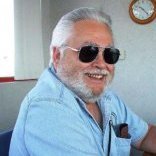
Brass Black
kurtvd19 replied to sailor jim's topic in Discussion for a Ship's Deck Furniture, Guns, boats and other Fittings
Paul: It sounds like you might have used the Birchwood Casey on brass that was on the model - if so it needs to be neutralized or you will have issues down the road. Normally the parts are rinsed with water after blackening and then attached. If the pieces are on the model you need to "rinse" the parts in some manner. I have blackened stropped blocks by rinsing the wooden blocks and the brass stropping in running water w/o any problems but recently came across a block that had fallen under the bench after blackening but before rinsing and the wood was marked with a dark blue color that does not rinse out. If I am assuming incorrectly please disregard my warning about the ned to rinse the blackened parts. However, if I am correct then you might want to use a baking soda water mix to stop the chemical process and then use water to rinse away the baking soda mix. This could be done in the same manner you applied the blackening agent. Kurt -

How would you improve your Byrnes tools?
kurtvd19 replied to Keith_W's topic in Modeling tools and Workshop Equipment
Thanks for the clarification. Just couldn't envision a depth adjustment but I know exactly what the length adjustment is. I got the optional height adjustment for my Preac when it was first introduced at a NRG conference. Charlie sold every one he brought to the conference as it was a real pain to adjust before the optional device - and only a bit better with it - but anything helped. Kurt -

How would you improve your Byrnes tools?
kurtvd19 replied to Keith_W's topic in Modeling tools and Workshop Equipment
Jheart: The sliding table for the Preac sounds interesting. Can you show a photo? The adjustable depth stop feature has me stumped - it sounds like it would make adjusting the depth of cut on the Preac as convenient as adjusting the depth of cut on the Byrnes saw. I have both saws and use them both but the hassle of adjusting the depth of cut on the Preac means I use it less than I would if the depth was easier to adjust. I would sure like to see a photo or two of the depth adjustment feature. Kurt -
Ken: With the (relative) mass of the guns I back up the glue with a pin of some sort either hidden in the carriage or on the bottom side of a wheel. Using brass for the wheels you can't use a pin there but some cross piece of the carriage will serve. Depends on the pin but that might be adequate to hold the gun in place regardless of your moving the model around later. Bite the bullet and order your rigging line from Syren. You can't get better line unless you make your own and then you will need to practice a lot to get the results Chuck gets after making or buying a rope walk, etc. The only stuff that comes close to Chuck's is Morope and Morope has a nasty tendency to come unraveled when cut and it's more expensive for less line. Morope comes from Germany whereas Chuck makes his stuff right here in the US. Kurt
- 440 replies
-
- niagara
- model shipways
-
(and 1 more)
Tagged with:
-

How would you improve your Byrnes tools?
kurtvd19 replied to Keith_W's topic in Modeling tools and Workshop Equipment
Boyd: The saw is perfect for cutting strips from sheets. As to the tilting table it depends on how many bevel cuts you need to cut on the edge od a sheet or strip. Something that Jim told me after I mentioned that it was a bit awkward to use the tilting table was to add a wedge under the saw base to tilt the saw so that the tilting table is parallel to the table top. I tried it and that works great. The tilt feature was great and got me through a commission and paid for itself in the time saved when I had to make a whole bunch of working 1/72 scale barge covers for a legal job. Kurt -
Ken: You took the suggestion a bit further than I had anticipated with the adjustments for doing the carronades too. Great job on it. The extra time and effort will certainly pay off when you are able to use it for other models, something I hadn't envisioned. Beats making anew one for each model. Take care, Kurt
- 440 replies
-
- niagara
- model shipways
-
(and 1 more)
Tagged with:
-
You can "stack" slitting blades to come up with the exact saw kerf you want for model work. Thurston sells all sorts of blade widths, just have enough so you can stack the necessary blades to get a kerf equal to the dado you want to cut. For our work the saw has plenty of power to do shallow dados. You would want the wider blades on the outside with the thinner blades sandwiched in between so no worry of the thin blades deflecting or heating up and warping as they are prone to do. Any dado being cut in our model work is not going to be all that wide or deep. Kurt
-
Ken: Very nice job on the gun carriages. Kurt
- 440 replies
-
- niagara
- model shipways
-
(and 1 more)
Tagged with:
-
Here is an example of the Krylon Gold Foil paint on a whitte metal casting from the Steam Pumper that Ken Foran designed for Model Expo. This was done with the rattle can. The white metal casting was cleaned up a bit and then primed with Badger STYNLREZ white primer. I can say with confidence that one can't tell this apart from a plated piece. Kurt
-
Jerry: The Krylon foil paints are great - also got the tip to use them from Ken Foran. I have decanted them from the spray can to use in my airbrushes and they are great that way too - better control than by the spray can. I did use some decanted foil paint with a brush to touch up some small areas on a build and it worked OK for that too. I don't know how it would be applied by brush to a larger area though. One point on these paints - they are to be applied over a white primer undercoat. I think it's more for the color than the sticking to the subject. Kurt
About us
Modelshipworld - Advancing Ship Modeling through Research
SSL Secured
Your security is important for us so this Website is SSL-Secured
NRG Mailing Address
Nautical Research Guild
237 South Lincoln Street
Westmont IL, 60559-1917
Model Ship World ® and the MSW logo are Registered Trademarks, and belong to the Nautical Research Guild (United States Patent and Trademark Office: No. 6,929,264 & No. 6,929,274, registered Dec. 20, 2022)
Helpful Links
About the NRG
If you enjoy building ship models that are historically accurate as well as beautiful, then The Nautical Research Guild (NRG) is just right for you.
The Guild is a non-profit educational organization whose mission is to “Advance Ship Modeling Through Research”. We provide support to our members in their efforts to raise the quality of their model ships.
The Nautical Research Guild has published our world-renowned quarterly magazine, The Nautical Research Journal, since 1955. The pages of the Journal are full of articles by accomplished ship modelers who show you how they create those exquisite details on their models, and by maritime historians who show you the correct details to build. The Journal is available in both print and digital editions. Go to the NRG web site (www.thenrg.org) to download a complimentary digital copy of the Journal. The NRG also publishes plan sets, books and compilations of back issues of the Journal and the former Ships in Scale and Model Ship Builder magazines.



